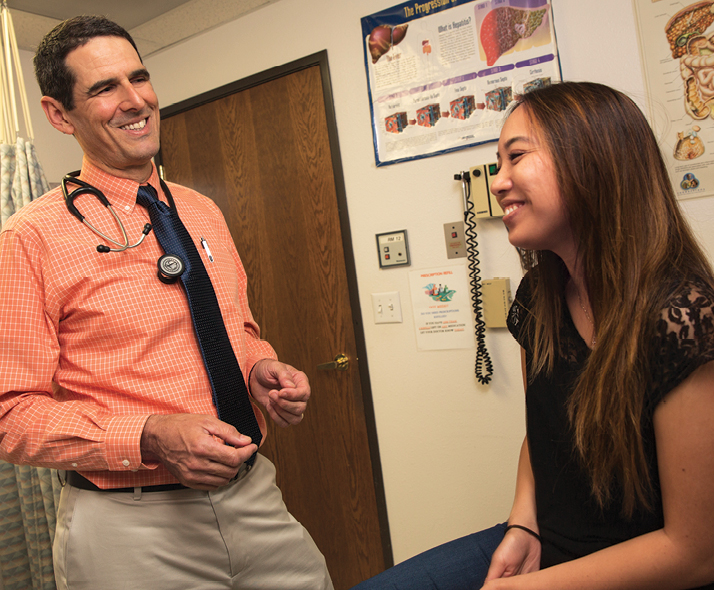
Clues for Kimmy
HBV study could improve outcomes for Asian-Americans
Kimmy Pham may carry clues as to why Hepatitis B causes more virulent liver cancer among some Asian American ethnicities than in others.
Pham, a Vietnamese American, is part of a health disparities study spearheaded by Christopher Bowlus, professor and acting chief of the Division of Gastroenterology and Hepatology at UC Davis Health System. The study seeks to find potential biological reasons why Hmong with hepatitis B virus (HBV) have higher liver cancer mortality rates and present at younger ages with late-stage disease than other Asian Americans with HBV.
Pham, 22, contracted HBV at birth and is symptom-free. Her mother contracted HBV in Vietnam before immigrating to the United States. Over 10 percent of the population in Vietnam is chronically infected with the virus.
Pham, a student at San Francisco State University, says it is “really cool” to be part of Bowlus’ study.
“They found a cure for Hepatitis C, and now they may find a cure for Hepatitis B,” she says, adding that HBV is somewhat more “unknown and mysterious.”
Using molecular and genomic diagnostics, as well as biostatistics, Bowlus and his colleagues are looking at the immune responses to HBV, as well as genetic differences in the hepatitis B virus in Hmong, Vietnamese and Chinese-Americans, hoping to understand why Hmong get liver cancer at younger ages and at more advanced stages than their Chinese and Vietnamese counterparts.
Bowlus says that discovering a biological reason for a possibly more virulent HBV strain will allow researchers to target therapies and prevention strategies.
“To me, this is an example of a project that expands from the community to the bedside to the bench,” Bowlus says.
The average liver cancer survival rate is six to 12 months among Chinese and Vietnamese Americans, but it is only about one month among Hmong Americans.
Bowlus’ study is funded by the National Cancer Institute and is one of seven newly funded health equities projects highlighted by the Association of American Medical Colleges institutions. Ultimately, Bowlus wants to enroll 50 Asian Americans from each ethnic group, for a total of 150. The subjects must be infected with HBV and not be on any treatment.
Researchers will collect blood from people infected with HBV, but have not developed cancer. They will then sequence and analyze the genome in the virus and the genes of immune cells to see if the Hmong have a specific virus strain or a response to the virus that may be associated with the worst outcome.
“We’re looking at the specific immune responses or gene expression in the blood cells of those infected with Hepatitis B,” says Bowlus. “We’re looking to see if there are specific immune responses in Hmong, to see if they have a lower immune response.”
Bowlus is using state-of-the-art sequencing technology. In the past, doctors and researchers sometimes have had difficulty drawing blood samples from the Hmong because blood is considered a nearly sacred life force. Elders in the community would have to provide consent before treatment. Bowlus says many older Hmong are still reluctant to seek medical treatment and testing, but treatment is becoming more accepted in the community.
“There is much less suspicion now, and more are seeking Western care,” he says. “The times are changing also in terms of access to care in their communities.”
Bowlus adds that in order to effectively study the disease among different ethnic groups researchers must have a relationship with the communities affected.
“They have to want to participate,” he says.
Pham certainly wants to participate. She says it gives her great pride to be part of a research project that is “trying to make a change.”
Bowlus also believes the project can reap great benefits to the communities studied.
“It’s a nice example of the whole spectrum of research, clinical care and community engagement,” he says.
